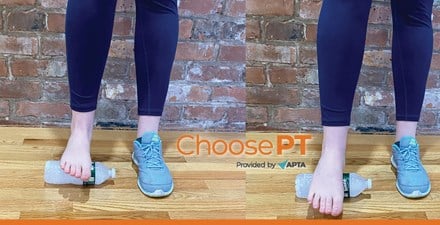
"Train well, race well." Physical therapist Robert Gillanders, PT, DPT, board-certified clinical specialist in orthopaedic physical therapy, subscribes to this philosophy for himself and the runners he treats. Making purpose and intensity part of your training requires knowledge of proper training and form.
Consider the following myths and tips from the Physical Therapists' Guide to Healthy Running, then consult the guide for more advice for getting started on a running regimen, race day tips, strategies for preventing injury, what to do if you're injured, and more.
Myth 1: Recovery is a break from training.
Recovery time is not just a break from training. Instead, it is a critical part of it. Runners, particularly those aged 35+, should incorporate recovery time in their weekly training plan.
Cross-training, such as using an elliptical machine or riding a bike, can substitute for short, easy-paced recovery runs to give your running muscles a break. This allows you to remain active while staying on track for a successful race.
Myth 2: Push through the pain.
It's not always wise to push through pain. Muscle soreness that eases as you run can be normal. However, there is a difference between soreness and pain . How do you determine if your pain is cause for alarm? Some types of pain should not be ignored. Seek the help of a physical therapist or other health care provider if you are experiencing pain. Pay particular attention to pain that:
- Does not go away within several hours after running.
- Exceeds a score of three on a pain scale of one to 10 (10 being the worst pain) while running.
- Is sharp.
- Wakes you up at night.
- Persists and worsens when you run.
- Occurs and continues in the same area every time you run.
A physical therapist will perform a thorough evaluation to assess your pain and determine how best to treat your symptoms. They also can identify when poor form may be contributing to your pain and prescribe necessary changes in training to allow your body to repair itself.
Myth 3: You can safely "zone out" on a run.
Running can clear your mind and provide stress relief. But you don't want to zone out entirely while you run. Thinking about your form while running can help you make subtle improvements.
"Listen to how you run," Gillanders advises. "Notice how your feet strike the ground. Does it sound the same on both sides, or does one foot strike louder? Notice where your feet land relative to your body. Do they land far in front of you, or relatively underneath you? Striking the ground closer to your body is often less stressful. Recognize that as you fatigue, your form is more likely to be compromised." When a runner's form is compromised, mechanical stress increases, and injury can potentially follow.
Learn more about healthy running:
Physical therapists are movement experts who improve quality of life through hands-on care, patient education, and prescribed movement. You can contact a physical therapist directly for an evaluation. To locate a physical therapist in your area, visit Find a PT.


